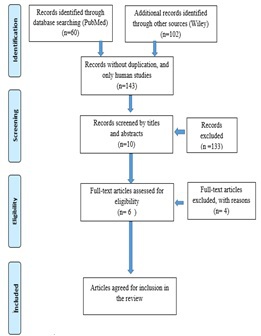IADR Abstract Archives
Is Bruxism Really Influencing Implant Survival? :A Systematic Review
Objectives: To evaluate the relationship between bruxism and dental implant failure
Methods: A systematic search in the PubMed and Wiley Online Library was conducted to identify all papers in the English literature, published from April 2013 to April 2018 assessing the role of bruxism in dental implant treatments. Manual selection of the full-text article was performed, there were only 6 articles which included in this study, from 162 articles in initial searches. The selected articles were reviewed according to PICO question.
Results: There were six studies that met the inclusion criteria, with 13.313 implants from 2.864 patients. All the included studies explain the effect of patients with parafunctional habits is bruxism on implant treatment results. From the six studies, five studies explain the high rate of treatment failure in bruxism patients, and only one study revealed a lower failure rate in patients with bruxism.
Conclusions: Bruxism is a contributing factor in causing the occurrence of dental implant technical/biological complications and plays a role in dental implant failure.
Methods: A systematic search in the PubMed and Wiley Online Library was conducted to identify all papers in the English literature, published from April 2013 to April 2018 assessing the role of bruxism in dental implant treatments. Manual selection of the full-text article was performed, there were only 6 articles which included in this study, from 162 articles in initial searches. The selected articles were reviewed according to PICO question.
Results: There were six studies that met the inclusion criteria, with 13.313 implants from 2.864 patients. All the included studies explain the effect of patients with parafunctional habits is bruxism on implant treatment results. From the six studies, five studies explain the high rate of treatment failure in bruxism patients, and only one study revealed a lower failure rate in patients with bruxism.
Conclusions: Bruxism is a contributing factor in causing the occurrence of dental implant technical/biological complications and plays a role in dental implant failure.

